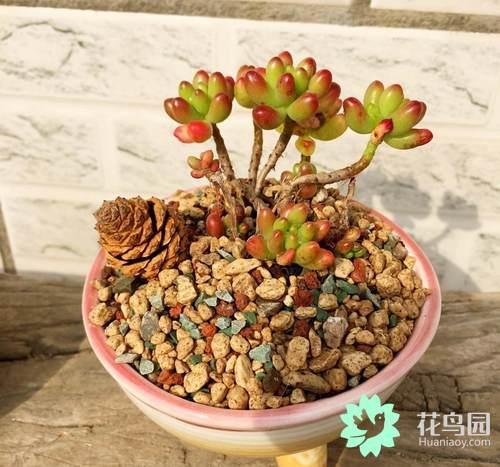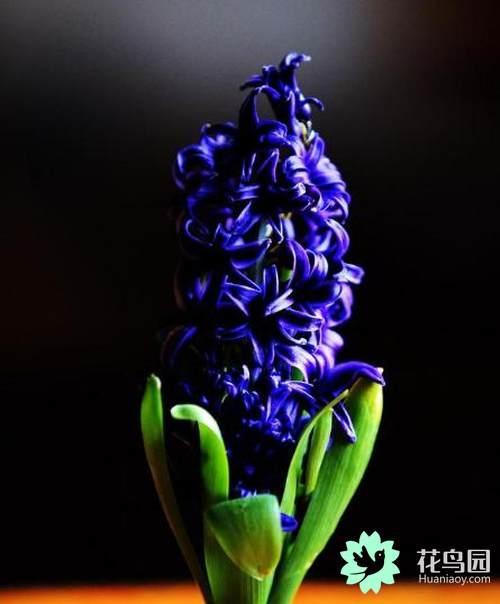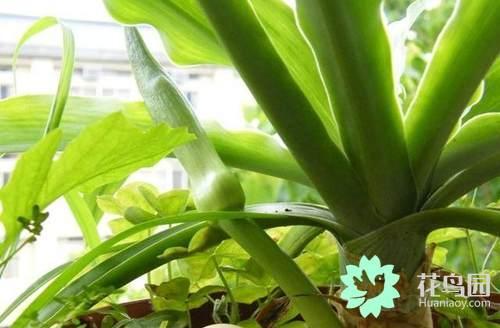How to turn your succulent plant into a small old pile?

The vegetative organs of succulent plants are thick and thick, usually expanding in the roots, stems and leaves, also known as succulent plants, which belong to different families and genera, among which the common succulent plants are sedum and cactus. There are many varieties of succulent plants, and there are about 10,000 kinds of succulent plants in the world. At present, most of the succulent plants in our market are imported, mainly in Japan and the Netherlands.
Succulent plants are generally appreciated in leaves and roots, while the roots of many succulent plants are thick and sturdy, old and mottled, in sharp contrast to evergreen leaf petals, which are called Little Old piles in the market. The so-called small old pile has several characteristics: the first is old, that is, the pile head, which needs to be cultivated for many years, can only be called old pile for succulent plants for more than 4 or 5 years; the second is small, that is, the pile head is compact and not tall, and the rhizome is not slender and random, but thick, short and inflated. Together, these two are little old stakes.
Although the cultivation of the little old pile takes time to accumulate, if it is not well managed, it will only form a disorderly growth of roots, long and boring (some businesses are known as the cliff, in fact, they are not well managed, they are just allowed to grow). The following is to share with you the experience of the cultivation of the little old pile.
First, variety selection. Generally choose varieties with swollen roots, such as Rhodiola, Rhodiola and so on.
Second, light. Most of the original places of succulent plants have strong light, so to cultivate small old piles, to enhance the light, put succulent plants on the south-facing balcony, there are conditions to illuminate all day in a transparent greenhouse, and under direct sunlight, the roots of the succulent plants grow rapidly and do not need shade in summer.
Third, moisture. The cultivation of succulent small old piles lies in water control, succulent native land is mostly dry and less rain, so the swollen rhizomes are formed to accumulate nutrients for their own supply. We take advantage of this characteristic of succulent plants to buckle more water and cultivate dry substrates instead of keeping them moist and dry. Even if they are dry, we should observe them, exercise succulent drought tolerance, let succulent plants form conditioned reflexes and enhance their own ability to accumulate nutrients, so that the roots will gradually swell. If you keep it moist regularly, it will form dependence, and the roots will grow and droop everywhere.
Fourth, fertilization. The cultivation of succulent small old piles is inseparable from fertilizer. And let succulent strong fertilizer elements, generally give priority to phosphorus and potassium fertilizer, generally in spring and autumn every week to ten days, apply retting cake fertilizer water and potassium dihydrogen phosphate solution once, use alternately, thin fertilizer is applied frequently.
Fifth, trim and reshape. Pruning is an artificial way to promote the horizontal development of succulent plants instead of growing upward. we can use the way of pinching the head and removing leaves. In addition, according to different succulent varieties, we trim the succulent plants in the shape to let the succulent plants grow according to their own design wishes. Cut off useless branches, withered branches and diseased branches. The shape of the succulent plant is beautiful, and the small old pile is stable and strong.
Sixth, patience. The first five measures are only daily management, and the formation of small old piles requires a process of accumulation of time, from a few years to more than ten years, which requires patience, and the cultivation of flowers and plants is a process of self-cultivation, do not be impatient, with the passage of time, succulent small old piles are formed, their own character is also introverted, this is a win-win process.
The above is my experience, hope to help you, succulent small old pile healthy and beautiful, root mottled, withered glory contrast, highlight the color of life, taboo roots long, branches and leaves grow, for those businesses to promote what cliff, water and other succulent small old piles, or the best to avoid.
- Prev

Green life-hyacinth
Hyacinth, a perennial herb of the hyacinth genus of the hyacinth family, is bulbous. It used to belong to the Liliaceae, but now it has been promoted to the new type genus of Hyacinaceae, and the hyacinth has changed from the original Liliaceae to the newly established Tianmen.
- Next

If you want to raise Wenshulan well, these four points are the most important.
Wenshu orchid, also known as magnolia, is a common plant in the family, which was called Mu's Wenshu orchid when it was just introduced into China. Because of its charming fragrance, the flower was named Vanilla and has since become most of the introducers to the genus.
Related
- Wuhan Hospital Iron Tree Blooming Result Was Instantly Frightened by the Gardener Master
- Which variety of camellia is the most fragrant and best? Which one do you like best?
- What is the small blue coat, the breeding methods and matters needing attention of the succulent plant
- Dormancy time and maintenance management of succulent plants during dormancy
- Minas succulent how to raise, Minas succulent plant pictures
- What are the varieties of winter succulent plants
- How to raise succulent plants in twelve rolls? let's take a look at some experience of breeding twelve rolls.
- Attention should be paid to water control for succulent plants during dormant period (winter and summer)
- Watering experience of twelve rolls of succulent plants
- Techniques for fertilizing succulent plants. An article will let you know how to fertilize succulent plants.

